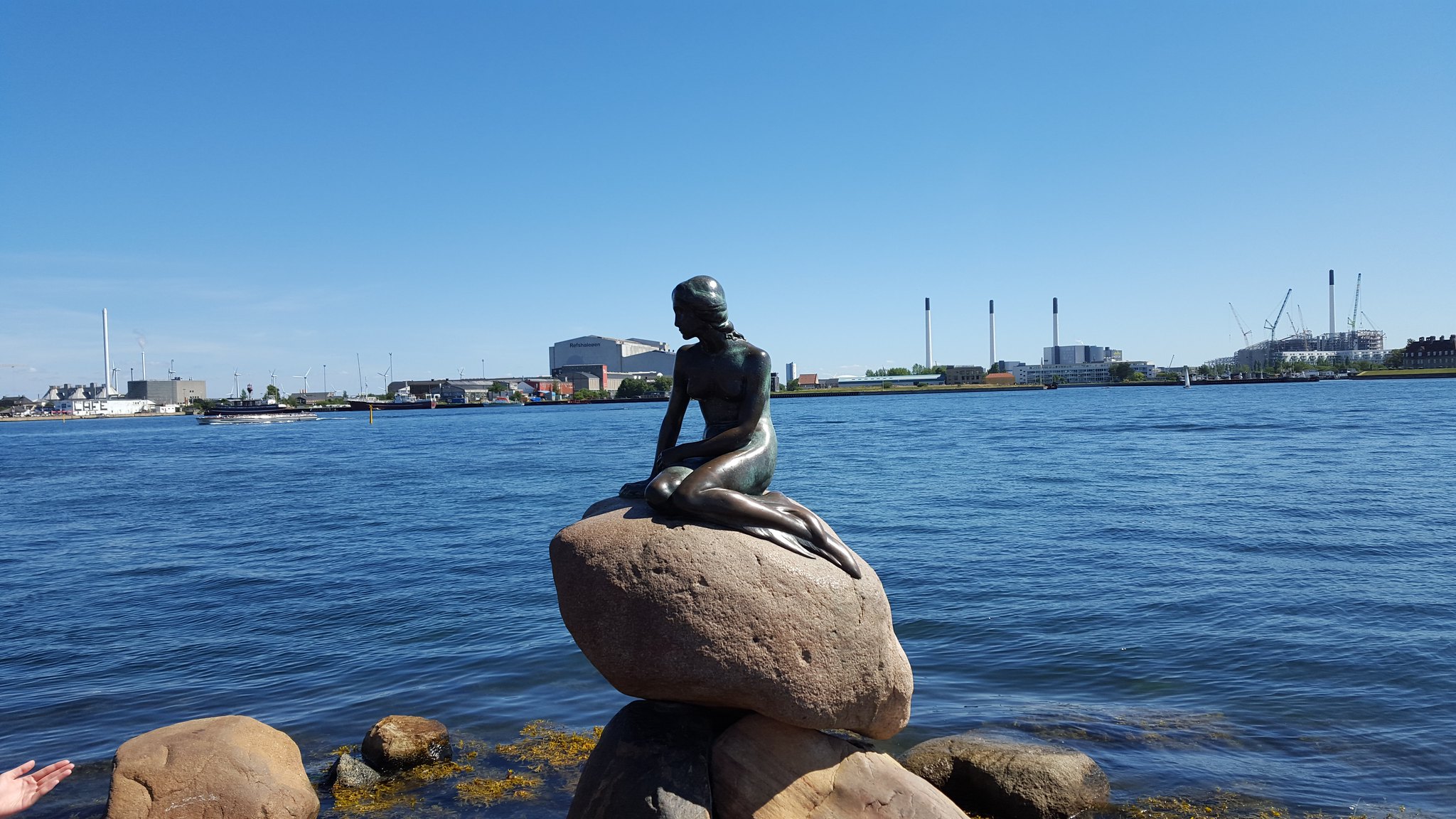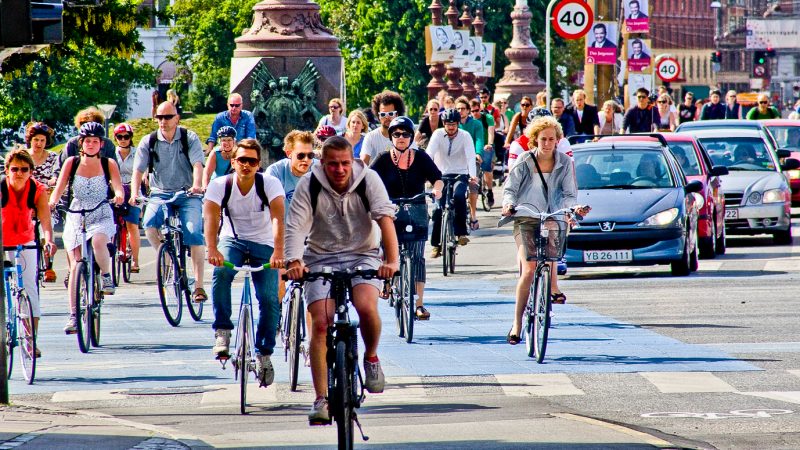Copenhagen: Life in the Slow Lane
Indian cities are in crisis.

Spend any length of time in a large city there and you will notice the overcrowding, the power and water shortages and, during monsoon, the streets that transform into stinking, litter-strewn rivers. At times, these cities can be almost unbearable to live in.
And, not least of course, there is the horrendous traffic chaos and congestion, the choking pollution and the increasing number of massive concrete flyovers: monstrosities that have taken their place among numerous other planning disasters that blight so many Indian cities.
A few years back, Delhi introduced an ‘odd-even’ traffic policy whereby vehicles with certain registration numbers were allowed on the road only on designated days to try to cut down on traffic congestion and pollution. But this failed to solve the underlying problem that stems from a model of ‘development’ that associates a (wholly unnecessary) push for urbanisation (and depopulation of the countryside) and car ownership with progress.
Despite the problems, the greater the urban sprawl and the more road building that takes place, the happier are the real estate, construction and car manufacturing sectors. That’s not idle speculation: the documentary ‘How Big Oil Conquered the World’ describes how the car and oil industry criminally conspired to undermine public transport systems in US cities to get the population and urban planners hooked on the car.
As long as urban planners prioritise the car and wrong-headed notions of ‘development’ governed by powerful players continue, Indian cities will not only sprawl ever outwards and be defined by traffic congestion and air and noise pollution, but residents will experience an ever-worsening decline in their quality of life and increasing dependency on motorized transport.
Indian planners might wish to take note of a recent New York Times; article which highlighted that Los Angeles has decided against adding lanes to a freeway.
Although Andre Gorz noted this back in 1973, policy makers are waking up to the fact that building extra lanes merely means more cars, more pollution and journey times increasing.
As soon as you build a highway or add lanes to a freeway, cars show up to fill the available capacity (known as induced traffic demand).
Gridlocked traffic on the streets of Delhi
Just as some countries are now realising the folly of widening and building ever more roads and jamming cities with cars, Indian planners carry on regardless by blighting the urban landscape with ever more huge concrete flyovers and expressways snaking across cities and dividing and destroying communities.
A day before Delhi implemented the second phase of its ‘odd-even’ vehicle policy, the city announced it wanted to support the construction of more roads to solve congestion by enhancing road capacity via new roads, road widening, elevated corridors, flyovers and underpasses.
In Delhi, it seems the problem is being offered as the solution. The issues outlined above are of course not unique to Delhi or India.
If there is one city that seems to be on the right track, it is Copenhagen. The city believes that cycling should be the foundation for sustainable transport strategies and is key to making cities clean, green and liveable. Copenhagen’s urban transport solution gives space to cars but more importantly to bicycles, pedestrians and public transport.
Back in the early 1970s, Copenhagen was just as traffic clogged as anywhere. Now it has around 400 km of cycle paths. The city’s 2017 Annual Bicycle Report confirms that cycling is the preferred mode of transport for the city’s inhabitants. Each day, some 62% of Copenhageners use their bikes to go to work or school/college.
Copenhagen has in recent years been voted the ‘best city for cyclists’ (it tops the list again in 2019) and the ‘world’s most liveable city’.
Throughout the world, there is now a desire to improve public health and combat climate change. As a result, Copenhagen’s renowned cycle-friendly policies are serving as a template for some of the world’s most congested cities.
Aside from health and environmental considerations, an effective urban transport policy should be democratic. Unlike cars, even the poorest segments of society can gain access to a bicycle.
The bicycle is indeed democratic, not just for those who cycle but also for the rest of the population who are too often impacted by planning blight, pollution and the colonisation of urban space as a result of planning that privileges car users ahead of everyone else.
However, the bicycle is only truly democratic when spatial segregation is limited and bike lanes and appropriate cycle-friendly infrastructure exist to properly connect all areas. Inspired by Copenhagen, Mexico City’s bicycle strategy is attempting to address this issue through a comprehensive cycle path network, which aims to create mobility through areas that have been closed off due to previous planning strategies.
The arrogance of space
For cities to fully embrace the bicycle, city planners must stop thinking like motorists or capitulating to powerful lobby groups and plan for the needs of cyclists. In Denmark, for example, the Copenhagen-Albertslund route is the first of a planned network that will comprise 26 Cycle Super Highways, covering a total of 300 km. The network is predicted to reduce public expenditure by €40.3 million annually thanks to improved health.
Consider that in Europe 50% of most city land is dedicated to streets and roads, parking, service stations, driveways, signals and traffic signs. And yet the average European car is parked for 92% of the time. Of the other 8% of time, 1.5% is spent looking for a parking space, 1% in congestion and just 5% is spent driving.
There are 30,000 deaths per year on European roads and four times as many disabling injuries. Consider too that an average European car has five seats but carries 1.5 persons per journey.
In Copenhagen, city planners tend to give an adequate proportion of road space to cyclists: proper cycle lanes with curbs that separate cycling space from car space; cycle lanes that are usually also sufficiently wide. After all, why should cars hog so much road space when the majority of road users are cyclists?
In the article ‘The Arrogance of Space’, it says:
We have a tendency to give cities human character traits when we describe them. It’s a friendly city. A dynamic city. A boring city. Perhaps then a city can be arrogant. Arrogant, for example, with its distribution of space.”
For too long the arrogance of car-obsessed urban planners has degraded our health and our quality of life. But when you have good-quality public transport and the opportunity to cycle thanks to appropriate infrastructure, there is no need to hand over excess space to cars and produce endless concrete sprawl for car parks.
Walk (or cycle) around Copenhagen and you will immediately appreciate there is much less traffic noise and pollution compared with other cities. It is indeed a spatially friendly and a compact city – and a less “arrogant city”. It is also less hectic and more tranquil than many other cities and – taking things even further – arguably more community oriented.
Slow living
Of course, community-oriented living isn’t just due to transport strategies, although Andre Gorz said that to love your place or space, it must first of all be made liveable, not trafficable. He went on to state that the neighbourhood or community should be shaped by and for all human activities, “where people can work, live, relax, learn, communicate, and knock about, and which they manage together as the place of their life in common.”
In Copenhagen, the municipality encourages outdoor living by offering open-access communal table tennis tables, basketball facilities, well thought out kids’ parks, landscaped parkland and lakes. Even during cold weather, Copenhageners congregate on the streets and in the parks to socialise and embrace the concept of ‘hygge’, probably best defined as: a conscious appreciation, a certain slowness, and the ability to recognise and enjoy the present. Get to know the city and you will soon realise that hygge isn’t just a cliché.
The key word in that definition is ‘slowness’ because from there we arrive at the concept of ‘slow living’.
Writing in 1973, activist and writer Ivan Illich stated:
The use of the bicycle… allows people to create a new relationship between their life-space and their life-time, between their territory and the pulse of their being, without destroying their inherited balance… In contrast, the accelerating individual capsule [the car] enabled societies to engage in a ritual of progressively paralyzing speed.”
Modern culture is an advocate of speed, epitomised by car worship. Cars, speed and high-energy living have become essential facts of life. In the process, our communities have become disjointed and dispersed. We have sacrificed ‘slow living’ – in terms of intimacy, friendship and neighbourliness – for a more impersonal way of accelerated living.
Where would be the need for the car when work, school or healthcare facilities are close by? Less need for ugly flyovers or six lane highways that rip up communities in their path. Getting from A to B would not require a race against the clock on the highway that cuts through a series of localities that are never to be visited, never to be regarded as anything but an inconvenience to be passed through.
Instead, how about an enjoyable walk or cycle ride through an urban environment defined by community and intimacy? An environment free from traffic pollution or noise and where ‘neighbourhood’ has not been deadened and stripped of its neighbourliness, local stores and facilities.
Clearly, many of the problems associated with modern cities are not just due to cars or transport systems. Urban planning and the colonisation of space mirrors capitalism and the needs of powerful corporations.
By focusing on capitalism and how culture reflects the division of labour, Andre Gorz said:
It cuts a person into slices, it cuts our time, our life, into separate slices so that in each one you are a passive consumer at the mercy of the merchants, so that it never occurs to you that work, culture, communication, pleasure, satisfaction of needs, and personal life can and should be one and the same thing: a unified life, sustained by the social fabric of the community.”
Although it would be naïve and misguided to think that the bicycle (and cultural change) could transform the social relations of capitalism, it is at least emblematic of a different form of urban planning and ‘development’.
Read the full article at the original website
References:
- https://www.counterpunch.org/2018/01/26/global-capitalism-and-livelihoods-denied-whipping-indias-farmers-into-submission/
- https://www.corbettreport.com/bigoil/
- https://www.nytimes.com/2018/04/25/opinion/cars-ruining-cities.html
- http://www.hotels-in-netherlands.com/bikereadercom/contributors/misc/gorz.html
- http://www.vtpi.org/gentraf.pdf
- https://copenhagenizeindex.eu/
- https://off-guardian.org/wp-content/medialibrary/Copenhagen-Cyclists-Federation-of-European-Cyclists.jpg?x14006
- https://www.ellenmacarthurfoundation.org/assets/downloads/publications/EllenMacArthurFoundation_Growth-Within_July15.pdf
- http://www.copenhagenize.com/2013/03/the-arrogance-of-space.html
- http://hyggehouse.com/hygge
- https://www.amazon.com/Tools-Conviviality-Ivan-Illich/dp/1842300113

